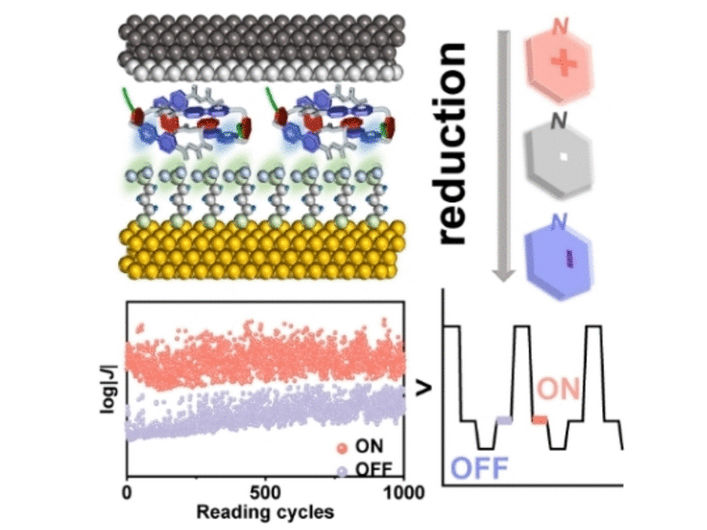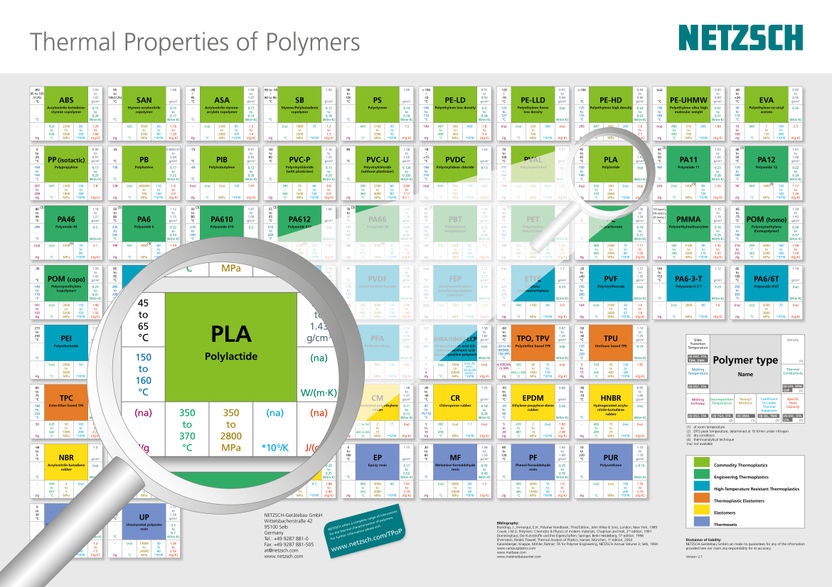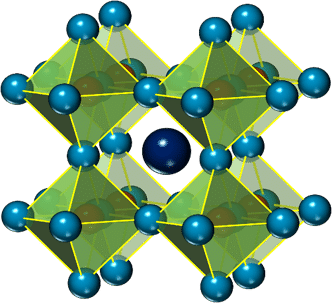Data Storage of Tomorrow
Supramolecular memristors based on bistable [2]catenanes
In these times of big data and artificial intelligence, the usual data storage media are not sufficient. The next generation of data storage must meet the demand for high-density storage and energy efficiency. One such technology is resistive random-access memory (RRAM), which stores data through changes in resistance. In the journal Angewandte Chemie, a research team has now introduced an approach to making supramolecular memristor, one of the key components in the construction of nano-RRAM.

© Wiley-VCH
A memristor (short for memory-resistor) changes its resistance depending on the voltage applied. However, constructing a memristor on the molecular scale is an enormous challenge. Although resistance switching can be achieved through redox reactions, and the charged states of molecules can easily be stabilized by counterions in solution, this stabilization is very difficult to achieve in the solid-state junctions required for a memristor.
A team led by Yuan Li at Tsinghua University in Beijing, China, has now chosen to take a supramolecular approach. It is based on a [2]catenane that is bistable, meaning it is stable in both oxidized and reduced forms and can exist in a positive, negative, or uncharged state. A [2]catenane is a system of two large molecular rings that are interlocked like two links in a chain but are not chemically bonded.
To build a memristor, the team deposits the catenane onto a gold electrode coated with a sulfur-containing compound, where it is bound through electrostatic interaction. On top of this, they put a second electrode made of a gallium-indium alloy coated with gallium oxide. The catenane forms a self-assembled monolayer of flat molecules between the two electrodes. This ensemble, designated as AuTS-S-(CH2)3-SO3–Na+//[2]catenane//Ga2O3/EGaIn, forms the memristor.
As is required for RRAMs. These novel supramolecular memristors can be switched between a state of high resistance (off) and a state of low resistance (on), depending on the applied voltage. These molecular resistance switches have achieved at least 1000 erase-read (ON)-write-read (OFF)–cycles. Switching between on and off occurs in significantly less than one millisecond, which is comparable to commercial inorganic memristors. The molecular switches “remembered” the set state—ON or OFF—for several minutes. This makes them a highly promising starting point for effective molecular memristors with non-volatile storage capabilities. In addition, they function as diodes, or rectifiers, which makes them interesting components for the development of molecular nano-RRAMS.
Original publication
Most read news
Original publication
Yu Xie, Cai‐Yun Wang, Ningyue Chen, Zhou Cao, Guangcheng Wu, Bangchen Yin, Yuan Li; "Supramolecular Memristor Based on Bistable [2]Catenanes: Toward High‐Density and Non‐Volatile Memory Devices"; Angewandte Chemie International Edition, 2023-9-12
Organizations
Other news from the department science

Get the chemical industry in your inbox
By submitting this form you agree that LUMITOS AG will send you the newsletter(s) selected above by email. Your data will not be passed on to third parties. Your data will be stored and processed in accordance with our data protection regulations. LUMITOS may contact you by email for the purpose of advertising or market and opinion surveys. You can revoke your consent at any time without giving reasons to LUMITOS AG, Ernst-Augustin-Str. 2, 12489 Berlin, Germany or by e-mail at revoke@lumitos.com with effect for the future. In addition, each email contains a link to unsubscribe from the corresponding newsletter.
Most read news
More news from our other portals
Last viewed contents

BASF and SK On entered into an agreement to evaluate collaboration opportunities in the global lithium-ion battery market - Targeted collaboration around cathode active materials
Air Liquide: start-up of a new unit in Tatarstan
BASF to increase prices for polyalcohols in Europe
Priscilla_White_(physician)
Attwater's_Prairie_Chicken


























































